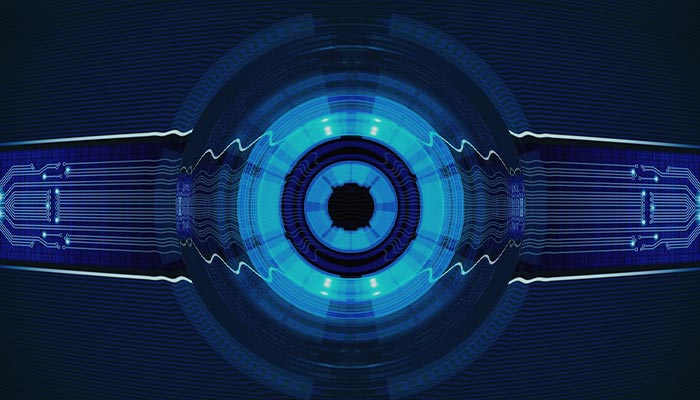Artificial intelligence in information security
Cybersecurity is now the most important thing in the tech world. Unfortunately, the field can’t keep up with how malware and ways to attack computers keep getting better and better. Artificial intelligence (AI) is a scary new tool that could make it impossible for people to stop themselves from doing bad things (AI).
Recently, AI has been looked at for good uses, such as scanning networks and systems for intrusions. Based on the Darktrace report, it’s safe to say that AI can also be used by “the other side” as a self-learning tool to help them attack.
As cybersecurity moves into the new world of advanced AI, it is important to know how AI can be used to do bad things and how it can be stopped.
Integrating ai with cyber security.

Hackers are making AI into weapons.
While cybersecurity companies have been looking into AI to stop attacks, hackers have been doing the opposite. AI’s ability to learn can give people who want to harm a way to get around normal security measures.
User error is a major threat to the security of companies and people. Hackers often use phishing as an example of this kind of vulnerability. It only takes one well-written email to get a user who doesn’t know better to click on a malicious link. If this is possible now, think about how much more successful phishing will be when AIs learn to copy patterns found in real emails.
AI that fights itself
The best thing about AI as a cybersecurity tool is that it can learn patterns and habits. This “machine learning” makes it possible for the AI to find mistakes in the code, which is a great way to find malware. Once AI is good at finding these problems, it can do it much faster and better than humans.
The AI learns by looking at huge amounts of data about malware with its algorithm. Based on what it has learned, the AI gets better at spotting different malware over time. But what happens if a hacker figures out how to change the algorithm or the data it uses to learn? The changes could teach the AI to act like it is looking for problems while ignoring them.
Using AI to trick security systems into believing there is an issue, one may DoS a system. For example, AI could tell a system to shut down completely when it seems like there are too many attacks.
Unfortunately, as machine learning techniques have improved, so has our understanding of how to protect them from people with bad intentions. As with most parts of cybersecurity, keeping up with hackers is often a losing battle. This means that AI can and will be used against itself.
How the Chatbot Came to Be
The chatbot has changed how many companies handle customer service. From Facebook to online banks, chatbots answer questions faster and better than people ever could. Many people think this is good for the service industry and a good way to ensure customers are happy.
But, like other AI technologies, chatbots are now used to do bad things. An example of this use is a bot that came out on Facebook in 2016. This bot duped numerous Facebook users into installing malware that gave remote access to their accounts without their knowledge.
A chatbot’s responses may be startlingly informative. Think about a conversation you might have with a customer service bot at a bank. People often give information like their address, phone number, and money-related details in these messages. A malicious bot programmed with AI could steal important information from a victim who doesn’t know it.
The most cutting-edge AI bots use conversational techniques. The residential versions of Google Assistant and Amazon Alexa have gained enormous popularity. These bots are always on the lookout for commands or questions. But because they aren’t secure, someone with bad intentions could get in and find out a lot about the owner.
The Pros and Cons of Taking Away Privacy
To identify a person, a procedure called de-anonymization integrates many data pieces. The process can find information, gather it from other sources, and figure out who it belongs to.
De-anonymization could also have bad effects. In real life, hackers could find out who used Netflix and what information they had about them. When you think about things like research, de-anonymization is especially disturbing.
On the other hand, de-anonymization can help find hackers and other bad people. Those who want to catch hackers would benefit a lot from being able to find out who wrote a piece of bad code.
AI is used for de-anonymization because it can quickly learn a set of data and figure out how it all fits together.
Is AI’s World Capable of Cybersecurity?
Malicious attacks that use AI to harm are becoming more of a problem daily. Even though it’s a big problem, cybersecurity has always been complicated because hackers may always be one step ahead. So how do the “good guys” get ahead in such a dangerous place?
Related
The Greatest 5 Development Tools For Artificial Intelligence And Machine Learning,
The 5 Most Crucial Artificial Intelligence (AI) Development Tools Of 2022
Practice makes you better.
One part of cybersecurity is doing exercises to find out where the weaknesses are. Cybersecurity companies and supporters have often set up ways for people to practice attacks on purpose to learn how they work.
This approach will undoubtedly be useful in artificial intelligence since it explains how algorithms and data sets interact to generate outcomes.
Unite
Even though learning about artificial intelligence is an ongoing process, those who work on it can be aware of how the systems might be vulnerable as they move forward. With a progressive lens, you can ensure that AI isn’t used before some safeguards are in place.
Protections for each individual
AI might seem like a problem for big businesses or the government. But, as with all cybersecurity issues, people need to know that malicious attacks can happen to anyone at any time. AI gives hackers a scary tool against people who don’t know what’s happening. You can do things to ensure you’re not vulnerable to an AI-led attack.
Be aware of what’s going on around you.
This advice can be used both in the real world and online. Easy ways to protect yourself from AI infiltration are to use strong usernames and passwords and be aware of your surroundings. Do not click on links that look sketchy, and be careful with emails from everyone.
Following the same smart cybersecurity practices that all users should use can go a long way toward keeping people safe from AI-powered attacks.
Conclusion In the digital world, progressive ideas are used for good and bad reasons. AI is not safe from being used by people who want to hurt others or take advantage of their weaknesses. Cybersecurity needs to pay more attention to what AI can do and figure out how to protect systems from the bad uses of this cutting-edge technology.
